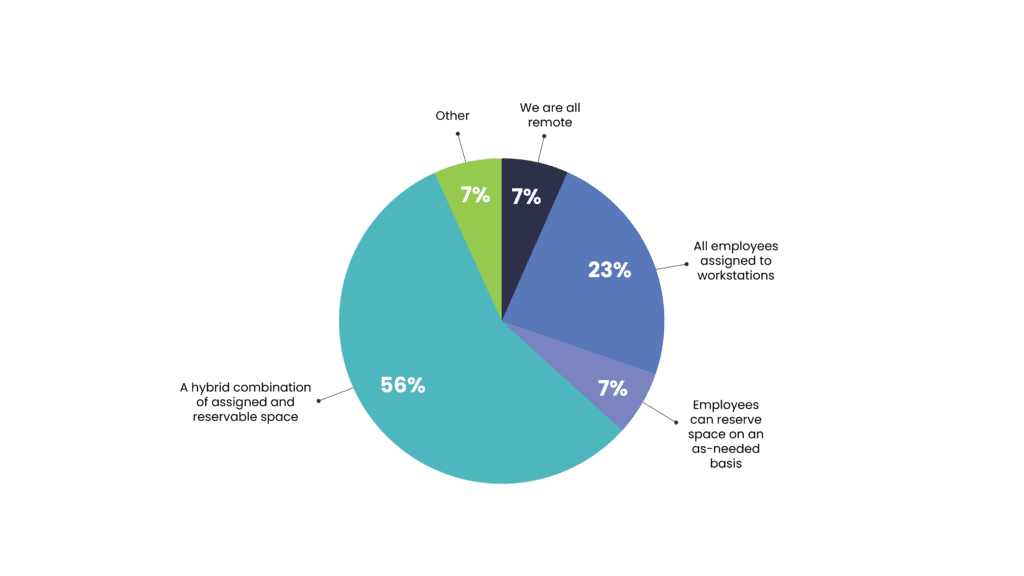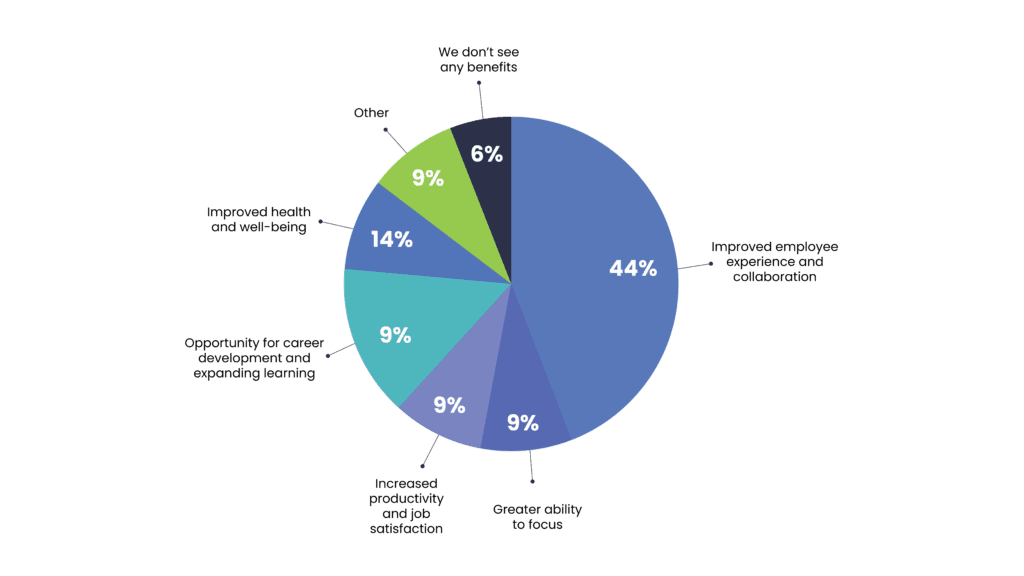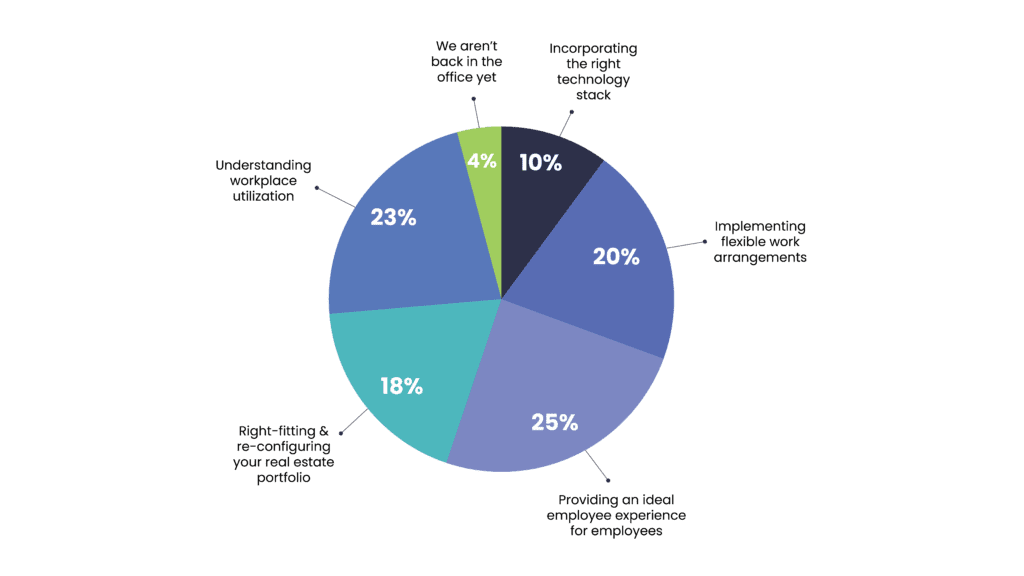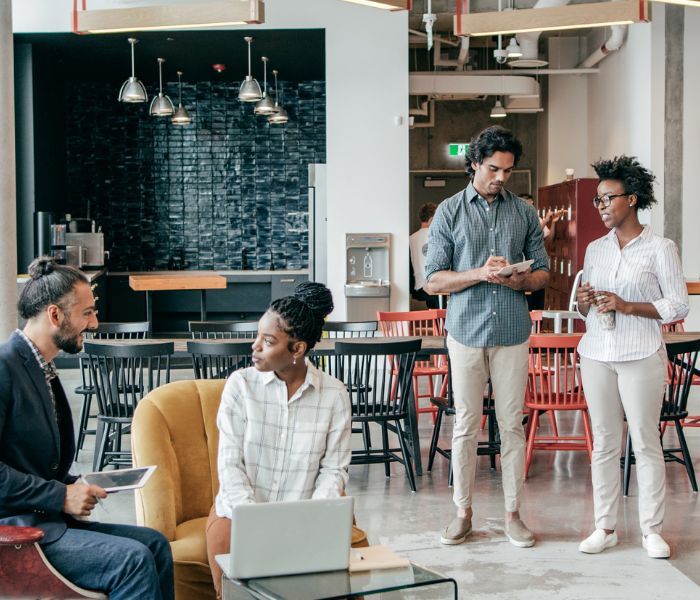Recently, FM:Systems conducted a series of interviews with two of our education customers about space management in a post-pandemic world. Central to this are lessons for organizations looking to adapt to newer work models, while also enhancing the employee experience through more innovative space management and the use of technology.
Cheryl Benningfield, Space Planning Manager at the University of North Texas, says one of its primary goals was to get students back on campus.
“For us, it was not important to have every employee return to the campus as they could still maintain a hybrid way of working. Of course, there is a culture of people always having been assigned a place to work. However, we adopted a percentage-based approach that if you had to be on campus at least 60% of the time, you would have an assigned workspace. Given that there are 5,000 employees to manage, the university is a big ship that takes a while to turn and change its way of doing things,” says Benningfield.
In fact, during our first part of the “Building Confidence out of Chaos” series that focused on adapting to hybrid workplace trends, more than half of respondents expected to adopt a hybrid combination of assigned and reservable space.

Adapting the space available to the trends of the ‘new’ world is a slow-moving process. It is important to have HR involved, even more so when not many businesses have policies in place for remote work. Nobody is untouched by having to adapt to a different style of work.
“Our non-student-facing departments proved to be good candidates to pilot certain programs and test options regarding how much time employees need to be on and off campus. The key learning was that people need options. In fact, all industries are demanding it with the risk being that organizations will lose talent if they do not offer virtual or at least partially virtual options.”
The University of North Texas has 8 million gross square feet of space, which is 99.8% occupied. This provided the campus with an additional driver to embrace change, especially from a space perspective.
“A big change for us has been trying to condense space in departments whose people have to be on campus. The free space created by this has enabled the university to create more collaborative workspaces. Doing this and embracing change have seen us increase our productivity by 94% over the past three years. The university is now not only reporting on space better but using the available space more optimally. Any organization looking to create a shift must begin by changing the mindset of its people, and then taking it one step at a time,” she says.



Keeping the employee experience in mind
The second part of our “Building Confidence out of Chaos” series focused on the topic of enhancing employee experience in the digital workplace. During this webinar, we posed the question: “What benefits are you or your employees seeing from coming into the office?” While only 6% of respondents didn’t see any benefits from welcoming employees back, 85% said they’ve been experiencing:
- Improved employee experience and collaboration
- Improved health and well-being
- Opportunity for career development and expanding learning
- Increased productivity and job satisfaction
- Greater ability to focus



For Ade Mawdsley, Space Resource & Program Manager at the University of Nottingham, the initial period following the onset of the pandemic was characterized by managing change on a reactionary basis.
“Our focus was on maintaining operations. However, we quickly came to understand that the first port of call would be to understand the needs of the students and only then, those of staff and colleagues. Fortunately, we work with forward-thinking people on an executive level. We had been looking at occupancy systems for some time, even though the focus was on understanding attendance at lectures. Fast-forward to the present, and our CFO realized early in the process that the university needed a digital workplace solution,” says Mawdsley.
The university knew that people would not be able to come back until it understood how space was being used and where the hotspots were. This saw the university developing an app that, at a rudimentary level, showed which spaces were used and which were available.
“We recognized that nobody wanted to return to the old ways of having one desk per person in a fixed office. Our Recovery Program Board wanted to change how people worked and when they worked. Furthermore, we wanted to increase the collaborative working areas, and the only way this could be done was with technology and partnering with FM:Systems,” he says.
Ultimately, by giving people options, and an easy way to find a space through getting support from the executive team in combination with the right workplace management solution, they were able to improve overall employee experience. What people want, particularly in the last 2.5 years with so many unknowns, is things that are predictable and make their lives easier. User experience has also become a much bigger priority among people within the workplace and no longer limited to personal and consumer experiences. Hybrid work is about the user experience of work; it’s about how people get there, the ease of getting there, what the space and environment is like when they get there, and more.
Mawdsley went on to share the key for any organization adopting new work arrangements or technologies is not to be afraid to try things.
“The university said from Day 1 that it was not going to get things right the first time. It was our willingness to get feedback, review results, and make changes that helped us be successful in this regard. Companies must keep trying and not just sit back and hope for the best. You must realize that the user experience has become a much bigger picture than in the past. It is now about more than the work experience but rather about what the space is like when they are there. The more intelligence you have, the easier you can make it on people,” he concludes.



Right-fitting your space
Lastly, during our third part of the “Building Confidence out of Chaos” series that focused on the topic of real estate portfolio optimization, we asked attendees, “What challenges are you experiencing now that employees are coming back into the office?”
About 96% of respondents were struggling with accurately understanding workplace utilization, choosing the right technology stack that could effectively support an ever-evolving workplace, implementing flexible work arrangements, and providing ideal experience for employees, while also determining how to best right-fit and reconfigure their real estate portfolio to reflect the way their people want to and actually use the space.



Brain Haines, Chief Strategy Officer for FM:Systems, addressed the elephant in the room – that the second biggest cost to most organizations is their real estate; and these costs were left on the table for most organizations during the pandemic. He emphasized that as organizations return, they need to expect more about the way they measure performance. In short, Haines said, “there is a tremendous amount of opportunity to right-fit organizations, and the only way to understand and correct it is with data. It’s not just about utilization anymore, but applying utilization to all your real estate and facility functions to measure the effectiveness of your building portfolio.”
By using FM:Systems workplace management solutions, including our reservation system and occupancy sensors, the University of Nottingham has been able to use great data to make informed, confident decisions related to redesigning space that reflects how they’re actually being used.
“One of the biggest outcomes was that we have been able to release more than 10,000 square feet of space that has gone back into creating more innovative teaching environments. Having conversations with our faculty and employees was essential to understanding how they would like to work. We have also been able to implement changes to make our students’ lives easier on campus,” he says.
Additional key takeaways from our “Building Confidence out of Chaos” series on Real Estate Portfolio Optimization included:
- Organizations need to apply utilization data as a primary component to understand if the real estate they have is the real estate they need
- Prior to the pandemic, the office was where people conducted business. Now, the office is focused on fostering collaboration, and this shift will only continue to unfold.
- Organizations can’t assume the real estate they have is the real estate people want to come back to. No longer can they just look at whether their space is used or not (i.e., utilization); they have to look at multi-data point analysis to see the full picture of the amount of space they have, measure the effectiveness, along with employee sentiment to make strategic decisions about your portfolio. Said differently, organizations can create confidence out of chaos with multi-data point analysis to measure if what they have is the right space for their organization now, and into the future.
There is no one-size-fits-all approach to a workplace strategy that works for every organization. Thankfully, there has been an evolution of technology available to help organizations manage their ever-changing workplace with confidence and control. What strategy has worked well for your organization? What challenges and opportunities have you faced along this ‘future of work’ journey?
To learn more, watch our full webcast recording.











